Read the latest Order: Map included. Issued Dec 27, 2019.
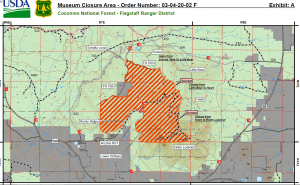

Read the latest Order: Map included. Issued Dec 27, 2019.
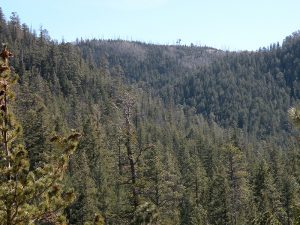
Latest info on the new closure area: map included
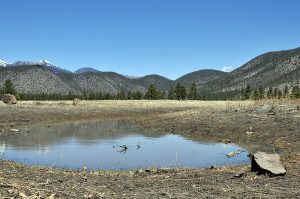
Here’s a list of alternate recreation sites to consider while forest work is on-going in the Dry lake Hills area immediately north of town.
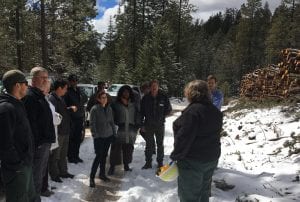
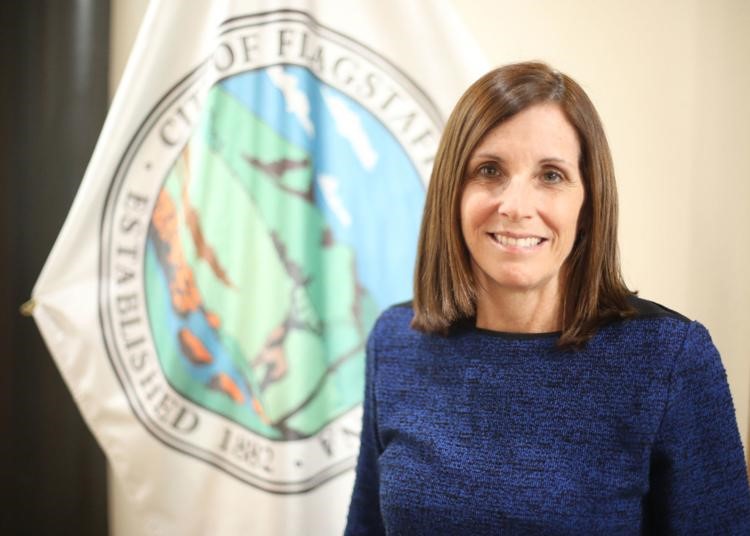
As part of a statewide tour, Senator Martha McSally visited Flagstaff on Friday, Mar 22nd, speaking with local leaders.
With Mayor Coral Evans, Coconino County Supervisor Art Babbott and several members of the Flagstaff Fire Department, the senator toured areas of the Coconino National Forest on the Dry Lake Hills that are part of the Flagstaff Watershed Protection Project.
McSally told the Daily Sun she was impressed with the project and that the federal government needed to increase the support and ease for which forest restoration projects were completed.
“Really, kudos to Flagstaff for stepping up as a city to make the decision to invest in areas outside the city limits, because this is so important to really set this example,” McSally said.
Excerpted from AZ Daily Sun, Mar 24th 2019
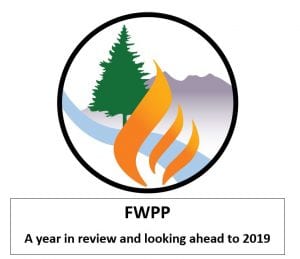
FWPP has made great progress over the last year! First and foremost, we appreciate you, the Flagstaff community for being supportive of this forest thinning and fire prevention work! The honest truth is; this work is difficult, there are many project partners involved, and there are always challenges to square up to and overcome. Thank you for supporting this project as we move along, year after year.
Some of the biggest highlights from 2018 are the award and initiation of two new contracts in the Dry Lake Hills area. In addition to steep slope and helicopter contractors working out in the woods, we also had three American Conservation Crews hand thinning in and around Brookbank Meadow all summer and fall. Please see our 2018 Biannual Report for a more in-depth recap of progress through the end of 2018.
FWPP was also able to significantly increase the amount of financial leverage received through cash and in-kind contributions from our project partners. In fact, 2018 was our biggest leverage year since the project began! Take a look at the FWPP Leverage 2013-2018. A special thank you to the Coconino National Forest for providing over $1.8M in cash to the project. This demonstration of support shows clearly your dedication to keeping our beloved forests around Flagstaff healthy and protected into the future.
Look forward to 2019, we are hoping to have our steep slope and helicopter contractors finish their work as swiftly as possible. We also are looking to have additional hand thinning crews working in the Dry Lake Hills and on Observatory Mesa. FWPP in cooperation with the Coconino National Forest, Hopi, and Navajo hope to pilot a free firewood program. Please read our list of 2019 FWPP Goals for more information.
Many more exciting and challenging things are ahead for FWPP. Thank you for your support, and please contact us at anytime!
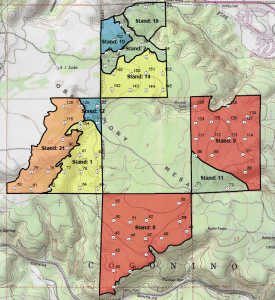
FWPP and the NAU School of Forestry have turned Observatory Mesa into an outdoor learning laboratory for future forest managers and scientists! Thanks to the hard work of the ‘Forest Ecosystem Assessment’ class, permanent research plots have been established across Observatory Mesa.
The plots provide a range of biophysical monitoring data that will be compiled and tracked for multiple years to come. The data will help students, researchers, and managers track forest changes over time. The first report on the data is now available: Observatory Mesa results 2018
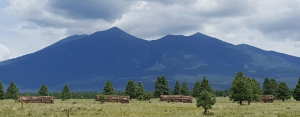
FWPP progress was presented to the Flagstaff City Council and Coconino County Board of Supervisors during a joint session.
Jay Smith, the new Coconino County Director of Forest Restoration presented on how the County will become involved in forest thinning activities in our region. Paul Summerfelt, the FWPP project manager for the City, followed with a summer 2018 FWPP status update.
Watch the recorded presentations here: http://flagstaffaz.swagit.com/play/06042018-1720/#12
The FWPP PowerPoint presentation can be viewed here: FWPP-Council_Supervisors_June 4
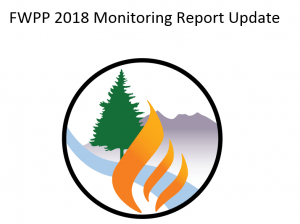
The Flagstaff Watershed Protection Project has updated its Monitoring Report this spring, 2018. The Monitoring Report was developed by FWPP staff, FWPP partner groups, subject matter experts, and input from Flagstaff stakeholder groups. The Report is organized around four frameworks that identify important aspects of the project to be monitored as implementation occurs. The frameworks are;
The updated Monitoring Report is designed to assess the FWPP monitoring capacity and to track what has been addressed, what is currently being monitored, and where monitoring gaps exist.
Read the full document here: FWPP Monitoring Report update 2018
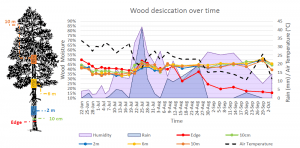
One of the most costly aspects of thinning around the Flagstaff area is the cost to transport the wood material. One idea is to allow cut trees to remain in the forest, giving them time to dry. As they lose moisture, they will also become less heavy which may present an opportunity to reduce the cost of transportation. See a preliminary report from an NAU School of Forestry graduate student exploring this question: Bundles Beetles – All sites complete report for Spring Summer and Fall 2017
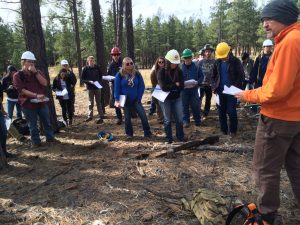
FWPP and the NAU School of Forestry are working together to develop Observatory Mesa into an outdoor learning laboratory for future forest managers and scientists! Beginning in Fall of 2017, the ‘Forest Ecosystem Assessment class’ will be establishing permanent forestry plots across Observatory Mesa (Monitoring plots across Obervatory Mesa).
The plots will be used to gather a range of biophysical monitoring data that will be compiled and tracked for multiple years to come. The monitoring data will include variables such as ground fuel, coarse woody debris, understory vegetation and shrubs, tree density and volume, and standing dead trees (snags). Photo points will also be established to visually track forest changes over time.
The goal of the project will meet two major objectives; 1) to provide undergraduate NAU forestry students with technical knowledge, skills, and experience in gathering biophysical data, analyzing, and interpreting ecological data and 2) to provide a long term monitoring project for FWPP to track the effects of forest thinning activities on Observatory Mesa over time. Thank you NAU School of Forestry professors and students who have made this possible! We look forward to seeing the initial data that you collect this Fall.
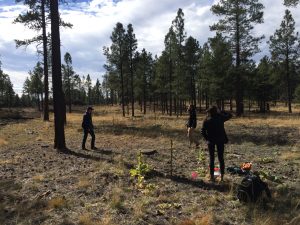
NAU School of Forestry students collecting monitoring data on Observatory Mesa
.